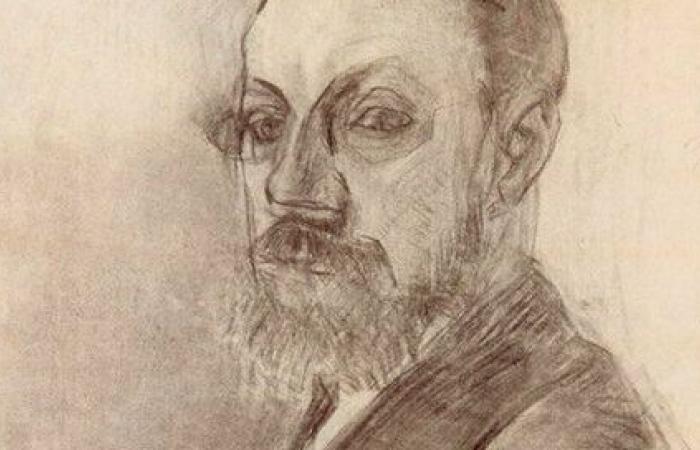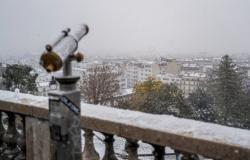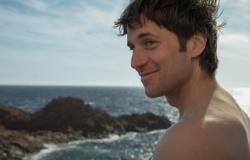OWe readily associate him with the South and Nice, where he spent a large part of his life, but Henri Matisse is a man from the North. “In the broad sense of the term: he was Picard,” explains Sophie Le Flamanc, deputy director of the Matisse museum in Cateau-Cambrésis. The departmental structure is preparing to reopen its doors to the public on November 23, after eighteen months of closure for extension work. An investment of 13 million euros (including 1.5 million from the State) which reflects the desire of the Nord department to link its image to that of the artist with global influence.
Every Wednesday at 4 p.m.
Receive the cultural news of the week not to be missed as well as Surveys, decryptions, portraits, trends…
Merci !
Your registration has been taken into account with the email address:
To discover all our other newsletters, go here: MyAccount
By registering, you accept the general conditions of use and our confidentiality policy.
Painter of light and shimmering colors – Picasso said of him that he had “the sun in his stomach” – Henri Matisse was born at Le Cateau on December 31, 1869, in the middle of a snowstorm. Part of his family was at the time anchored in this northern city near Cambrai, then populated by nearly 10,000 souls.
To launch their seed business, his parents preferred Bohain-en-Vermandois, 15 kilometers further, in Aisne. It is in this town of weavers, famous for its luxurious fabrics with colorful patterns, that the young Matisse will spend his first twenty years.
Long convalescence period
“He had difficulty finding his place there,” recalls Mariana Cambier, cultural mediator at the Henri Matisse family home, in Bohain. His father never accepted that he refused to return to business and then turned his back on the profession of notary for which he had paid for his studies, in order to go “scribbling” in Paris. »
A young man in fragile health, Henri Matisse discovered his vocation during a long period of convalescence during which his mother, an amateur painter, gave him painting equipment to distract him. “Before, I had no taste for anything, I felt great indifference to everything they wanted me to do. From the moment I had this box of colors in my hands, I felt that this was where my life was,” the artist confided.
In the capital, the first years are difficult. So much so that in February 1903, aged 33, the penniless painter was forced to return to Bohain with his wife and their three children. He will not find the expected respite there: the inhabitants make life difficult for the misunderstood “dauber”, who will even be given the contemptuous nickname of “fool Matisse”. The family did not take long to return to Paris, before settling permanently under the pure skies of the Côte d'Azur.
A donation to the municipality
The Matisse museum in Cateau-Cambrésis, however, “is the only one that Henri Matisse opened during his lifetime”, recalls Sophie Le Flamanc. In the 1930s, a handful of residents of Le Cateau became aware of its scale; a committee is created, which multiplies the appeals to the child of the North, cut off from his roots. Without success, at first.
At the end of the Second World War, which left the area devastated, a museum project was confirmed. The painter, almost octogenarian and very busy with his project for the Rosary Chapel, in Vence, reconnects with the North. Pressed by four of his notables, he promised to make a donation to the municipality in which he was born.
This came to fruition during the summer of 1952, with no less than 82 works: several dozen drawings and engravings, five sculptures, two paintings… A gesture estimated at nearly 16 million francs. Which he accompanies with another concession: Matisse intends for the school group of the commune, which must bear his name, his stained glass project The River of Lifeinitially designed for the Vence chapel. The work, renamed The Bees and inaugurated in October 1955, adorns the playroom of the Henri-Matisse nursery school.
“As giving back to Caesar what belongs to Caesar, I helped the town of Le Cateau to create this museum. Part of the result of a life of work which was imposed on me by destiny, and therefore rightly placed”, wrote the painter in a declaration read for the inauguration of the Matisse museum, on November 8, 1952. Too old, he himself cannot attend. Two of his children, Marguerite and Jean, are making the trip. The exhibition room, in which the works were arranged according to the artist's precise instructions, was installed on the first floor of the town hall, in the room where his parents were married.
Exhibit in good conditions
Thirty years later, in 1982, the museum was transferred to a historic building in the city, the Palais Fénelon, which served as a summer residence for the archbishops of Cambrai in the 18th century.e century. Over the years, the collections were enriched thanks to donations from the family of Henri Matisse, as well as geometric abstraction artists, Auguste Herbin (who spent his childhood in Cateau-Cambrésis) and Geneviève Claisse.
After its departmentalization, in 1992, the museum was expanded and renovated for the first time. This allowed him to receive the Alice Tériade donation, an important collection of modern art composed of works by Giacometti, Picasso, Léger, Chagall, Miró… So many riches that the surface area of the Fénelon palace will soon no longer be enough to exhibit in good conditions: the Nord department decides on a new extension.
After more than two years of work – during which its collections traveled to Beijing and Shanghai – the Cateau-Cambrésis museum will be reborn at the end of November, increased by 1,000 square meters thanks to the acquisition of the former covered market of the city, and restructured by the architect Bernard Desmoulin, architect of the renovation of the Cluny museum in Paris. “Matisse is the big winner from this expansion,” rejoices Sophie Le Flamanc.
The Lilloise, former chief of staff to Jean-René Lecerf, president of the Nord department from 2015 to 2021, discovered the Matisse museum at the end of the 1980s. In this month of October 2024, wearing a construction helmet , she monitors the progress of the work.
A charcoal placed on the end of a fishing rod
The extended museum will have nine additional exhibition rooms including a large modular platform of 300 square meters which will allow the visitor to embrace the artist's entire career, from his discovery of painting with thePicardy weaver workshop (1895) during his Fauvist period with Collioure, rue du Soleil (1905), from his years in Nice to his last compositions made with cut and glued gouache papers.
Among the remarkable works preserved, four original plasters of monumental sculptures Not backwardsand the Portraits of the grandchildren Claude, Gérard, Jacqueline painted by Matisse in 1950 (four years before his death) on the ceiling of his room-studio at the Régina hotel in Nice, using a charcoal placed at the end of a fishing rod!
The new Matisse tour will end with an immersive virtual tour of the Vence chapel, considered by the artist to be the summit of his creation. “The visitor will be able to walk inside and outside as if they were there with a 180-degree view, it’s unique,” enthuses Sophie Le Flamanc, delighted that this renewal of the museum will allow her to integrate digital. A separate entrance, intended for groups of visitors, will also allow them to be welcomed in better conditions.
To Discover
Kangaroo of the day
Answer
Between the artist's family and the North, links have been maintained: on November 22, several descendants of Henri Matisse, including his great-grandson, Georges Matisse, and even Barbara Duthuit, who perpetuates the legacy of the painter from the United States, will attend the inauguration of the expanded museum at Cateau-Cambrésis.
They will discover the temporary exhibition on books illustrated by Matisse (“How I made my books”, from November 23, 2024 to April 13, 2025) and will attend, thanks to an exceptional loan, the meeting of two great works by painter, Window to Tahiti I and II. The first belongs to the collections of the Matisse Museum of the City of Nice, the second is kept at Cateau-Cambrésis. The fruit of a partnership in the form of a link between the two institutions, capable of reconciling for good the man of the North and the South.






